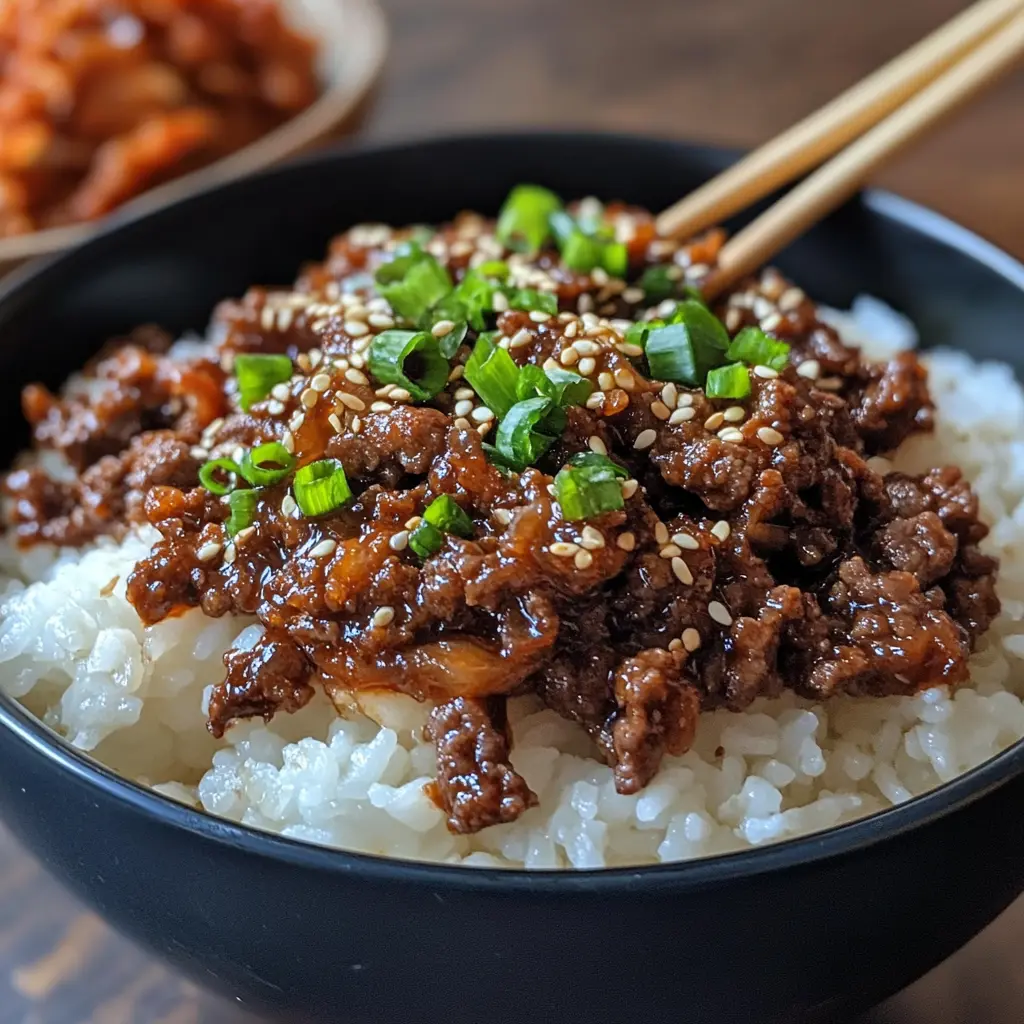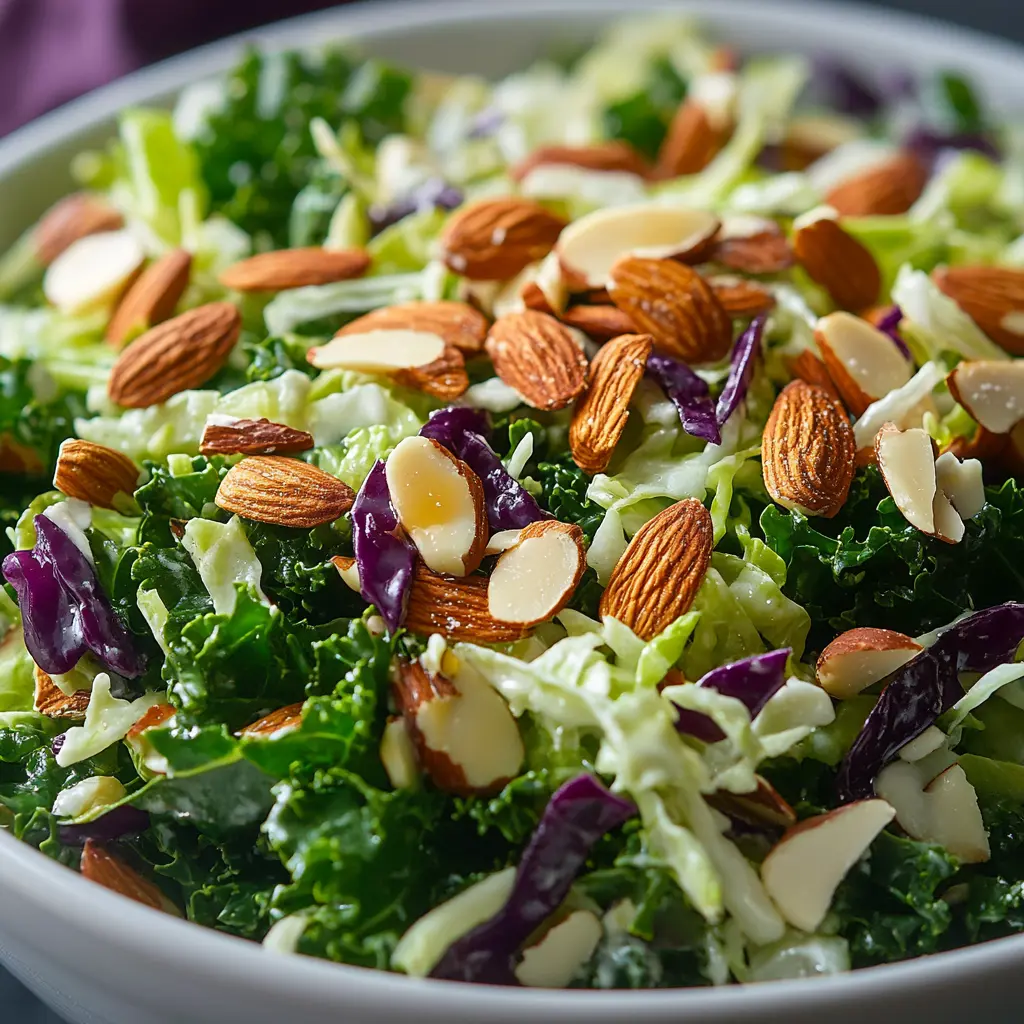Korean ground beef bowl is a delicious, budget-friendly dish that brings together the bold flavors of Korean cuisine in a simple, quick-to-make meal. This dish is perfect for busy weeknights when you need a hearty and flavorful meal in under 30 minutes. It features ground beef cooked in a savory-sweet sauce made with soy sauce, garlic, ginger, and brown sugar, served over a warm bed of rice and garnished with sesame seeds and green onions.
In this guide, we’ll cover everything you need to know about making the best Korean ground beef bowl, from its origins and key ingredients to cooking steps, side dish pairings, and variations. Whether you’re looking for a healthier option or want to spice it up, this article will help you create the perfect dish.
Table of Contents
What is a Korean Ground Beef Bowl?
Origins of Korean Ground Beef Bowls
Korean cuisine is known for its bold flavors, rich marinades, and love of rice-based dishes. The Korean ground beef bowl takes inspiration from traditional Korean bulgogi, a dish made of thinly sliced marinated beef grilled to perfection. However, this version simplifies the process by using ground beef instead of sliced steak, making it easier and more affordable while still delivering the signature sweet and savory flavors of Korean cooking.
Why It’s a Popular Dish
This dish has gained popularity because of its simplicity, affordability, and incredible taste. It requires only a handful of ingredients, many of which are pantry staples, and can be made in just one pan. It’s also highly customizable, allowing home cooks to adjust the sweetness, spice level, and garnishes to their preference. Whether you’re meal prepping for the week or need a last-minute dinner idea, the Korean ground beef bowl is a reliable go-to.
The Difference Between Traditional and Modern Versions
Traditional Korean bulgogi uses marinated steak that’s grilled or stir-fried, while the modern ground beef version offers a quicker alternative without sacrificing flavor. The sauce remains similar, combining soy sauce, garlic, ginger, sesame oil, and sugar to create a delicious umami-packed glaze. Some modern adaptations include using cauliflower rice for a low-carb version or adding vegetables like bell peppers and carrots for extra nutrition.
Ingredients for the Best Korean Ground Beef Bowl
Essential Ingredients for Authentic Flavor
A great Korean ground beef bowl starts with a few key ingredients that give it its signature sweet, savory, and slightly spicy taste. Here’s what you’ll need:
- Ground beef – Lean ground beef (80/20 or 85/15) works best to keep the dish flavorful without being too greasy.
- Soy sauce – A staple in Korean cuisine, it adds deep umami and saltiness. Use low-sodium soy sauce if you want to control the salt levels.
- Brown sugar – Provides sweetness to balance the salty and savory elements. Honey or maple syrup can be used as alternatives.
- Garlic – Fresh minced garlic enhances the depth of flavor.
- Ginger – Adds warmth and a slight spiciness, complementing the other flavors.
- Sesame oil – Gives the dish its nutty and aromatic Korean touch.
- Red pepper flakes (gochugaru) – Optional but recommended for a mild heat kick.
- Green onions – Used for garnish and to add a fresh, slightly sharp contrast.
- Sesame seeds – Toasted sesame seeds bring a subtle crunch and nuttiness.
- Cooked white rice – The traditional base for serving Korean ground beef. Jasmine or short-grain rice works best.
Substitutes for Healthier Alternatives
If you’re looking for a lighter or healthier version, here are some substitutions:
- Ground turkey or chicken – A leaner protein alternative with a milder flavor.
- Coconut aminos – A lower-sodium, soy-free alternative to soy sauce.
- Cauliflower rice – A great low-carb substitute for white rice.
- Stevia or monk fruit sweetener – A sugar-free alternative to brown sugar.
- Avocado oil – Can replace sesame oil if you prefer a neutral-tasting oil.
Where to Find Authentic Korean Ingredients
Many of the ingredients for this dish can be found in regular grocery stores, but for the best quality, check out an Asian or Korean market. Stores like H Mart, 99 Ranch, and online retailers like Amazon often carry high-quality soy sauce, gochugaru, and sesame oil.
Step-by-Step Recipe for Korean Ground Beef Bowl
Preparing the Ground Beef
- Heat the pan – Place a large skillet over medium-high heat and let it warm up for a minute.
- Cook the ground beef – Add the ground beef to the skillet and break it apart with a spatula. Cook for about 5–7 minutes, stirring occasionally, until the beef is browned and cooked through. Drain excess grease if needed.
Making the Signature Korean Sauce
- Mix the sauce ingredients – In a small bowl, whisk together soy sauce, brown sugar, sesame oil, minced garlic, grated ginger, and red pepper flakes.
- Adjust sweetness and heat – If you prefer a sweeter dish, add a little more brown sugar or honey. For extra spice, increase the red pepper flakes or add gochujang (Korean chili paste).

Cooking Everything Together for Maximum Flavor
- Pour the sauce over the beef – Reduce the heat to medium-low and pour the sauce over the cooked beef. Stir well to ensure every piece is coated in the flavorful glaze.
- Simmer for enhanced taste – Let the beef simmer for 2–3 minutes, allowing the sauce to thicken and absorb into the meat. Stir occasionally to prevent sticking.
- Add sesame seeds – Sprinkle toasted sesame seeds into the beef mixture for a final touch of nutty flavor.
Serving Suggestions and Garnishing Ideas
- Serve over rice – Spoon the saucy ground beef over a bed of steamed white or brown rice.
- Top with green onions – Finely chop green onions and sprinkle them over the dish for a fresh contrast.
- Optional garnishes – Add julienned carrots, cucumber slices, or a fried egg for extra texture and nutrition.
- Side dishes – Pair with kimchi, pickled radish, or a simple cucumber salad for an authentic Korean meal experience.
Best Side Dishes to Serve with a Korean Ground Beef Bowl
A Korean ground beef bowl is delicious on its own, but pairing it with the right side dishes can elevate the meal and create a well-rounded dining experience. Whether you’re looking for something fresh, crunchy, or traditional, these side dishes complement the flavors perfectly.
Korean-Inspired Side Dishes
- Kimchi – The tangy, spicy, and slightly sour flavors of fermented cabbage or radish balance the sweetness of the beef.
- Korean Cucumber Salad (Oi Muchim) – A refreshing, slightly spicy side dish with crunchy cucumbers, sesame seeds, and a soy-based dressing.
- Korean Spinach Side Dish (Sigeumchi Namul) – Lightly seasoned spinach with sesame oil, garlic, and soy sauce adds a nutritious touch.
- Pickled Radish (Danmuji) – Sweet and tangy pickled radish slices add a crisp texture and refreshing contrast to the beef.
Healthy & Low-Carb Pairings
- Cauliflower Rice – A great low-carb substitute for white rice that still absorbs the flavors of the beef and sauce.
- Steamed or Roasted Broccoli – A simple and nutritious option that pairs well with the umami-rich beef.
- Zucchini Noodles – A lighter, vegetable-based alternative to traditional rice or noodles.
- Avocado Slices – Creamy avocado adds healthy fats and balances the slight heat from red pepper flakes.
Quick and Easy Sides for a Balanced Meal
- Fried Egg – Adding a sunny-side-up or soft-boiled egg on top of the beef bowl enhances richness and adds protein.
- Miso Soup – A warm and comforting soup that complements the umami flavors in the dish.
- Edamame – Lightly salted steamed edamame beans make a protein-packed, easy-to-make side.
- Asian Slaw – A crunchy coleslaw made with cabbage, carrots, sesame oil, and rice vinegar offers a refreshing contrast.

Nutritional Value and Health Benefits of a Korean Ground Beef Bowl
A Korean ground beef bowl is a well-balanced meal that combines protein, carbohydrates, and healthy fats. Understanding its nutritional content can help you make adjustments based on your dietary needs.
Is Ground Beef and Rice a Healthy Combo?
Ground beef provides a rich source of protein and essential vitamins, while rice serves as a satisfying carbohydrate base. When made with lean beef and paired with whole-grain or lower-carb alternatives, this dish can be a nutritious meal.
Calorie Breakdown of a Korean Beef Bowl
The exact nutritional content varies based on ingredients and portion sizes. Below is an approximate breakdown for a standard serving of Korean ground beef with white rice:
| Nutrient | Amount Per Serving (1 Bowl) |
|---|---|
| Calories | 450-550 kcal |
| Protein | 25-30g |
| Carbohydrates | 45-55g |
| Fats | 15-20g |
| Fiber | 2-4g |
| Sodium | 800-1000mg |
To reduce calories, use lean ground beef (90/10 or 93/7), opt for brown rice or cauliflower rice, and adjust the amount of sugar and soy sauce in the recipe.
How to Make it a Healthier Dish
- Choose leaner meats – Using lean ground beef or turkey reduces fat content without compromising protein.
- Use low-sodium soy sauce – This helps control sodium intake while maintaining the umami flavor.
- Increase vegetables – Adding mushrooms, bell peppers, or zucchini boosts fiber and nutrients.
- Reduce sugar – Using a natural sweetener like honey or cutting back on brown sugar lowers added sugar intake.
- Serve with whole grains – Swap white rice for brown rice or quinoa for added fiber and a slower blood sugar release.
Korean Beef vs. Other Beef Dishes
Korean beef dishes stand out for their unique balance of sweet, savory, and umami flavors. Understanding how Korean ground beef differs from other beef dishes can help you appreciate its distinctive taste and versatility.
How Korean Beef Differs from Other Asian Beef Dishes
- Chinese Beef Stir-Fry vs. Korean Beef – Chinese stir-fries often use cornstarch for thickening and rely on oyster sauce or hoisin for sweetness, while Korean beef incorporates sesame oil and brown sugar for a more balanced, caramelized taste.
- Japanese Gyudon vs. Korean Beef Bowl – Gyudon, a Japanese beef bowl, is made with thinly sliced beef simmered in soy sauce and mirin, giving it a lighter, slightly sweeter flavor compared to the bolder, garlic-heavy Korean ground beef bowl.
- Thai Basil Beef vs. Korean Beef – Thai basil beef (Pad Kra Pao) uses fish sauce and Thai basil, creating a more herbal and pungent flavor profile, whereas Korean beef relies on soy sauce and sesame for depth.
Korean Ground Beef vs. Korean BBQ Beef
- Texture and Cut of Meat – Traditional Korean BBQ (bulgogi) uses thinly sliced ribeye or sirloin, marinated for hours before grilling, while ground beef is a quicker, more accessible alternative.
- Cooking Method – Bulgogi is typically grilled or pan-seared, whereas Korean ground beef is stir-fried in a skillet.
- Flavor Profile – Both dishes share similar ingredients, but bulgogi tends to have a richer, smokier taste due to its marinade and grilling process.
What Does Korean Beef Taste Like?
Korean beef is known for its umami-packed flavor, blending sweet, salty, and slightly spicy notes. The combination of soy sauce, brown sugar, garlic, ginger, and sesame oil creates a caramelized glaze that coats the meat, giving it a deep, savory taste with a hint of nuttiness.
Variations & Customizations for Korean Ground Beef Bowl
One of the best things about a Korean ground beef bowl is how easily it can be customized. Whether you’re looking for a spicier version, a low-carb option, or a vegetarian alternative, there are plenty of ways to tailor this dish to your preferences.
Spicy Version: Adding Heat to the Dish
For those who enjoy a kick of spice, consider these additions:
- Gochujang (Korean chili paste) – Adds depth and smokiness with a moderate heat level. Start with one tablespoon and adjust to taste.
- Extra red pepper flakes (gochugaru) – Sprinkle more into the sauce for a bolder heat.
- Sriracha or chili oil – Drizzle a small amount before serving for an extra spicy bite.
- Fresh or pickled jalapeños – A great topping to add crunch and spice.
Low-Carb & Keto-Friendly Adaptations
To make this dish keto-friendly, swap out high-carb ingredients for these alternatives:
- Cauliflower rice – A low-carb substitute that absorbs the flavors just like traditional rice.
- Coconut aminos instead of soy sauce – A lower-carb, soy-free alternative.
- Sugar substitutes – Use monk fruit sweetener or erythritol instead of brown sugar.
- Zucchini noodles – A fun and healthy way to replace rice or noodles.
Vegetarian and Vegan Alternatives
If you prefer a plant-based version, try these substitutions:
- Firm tofu or crumbled tempeh – Use as a meat alternative and cook it the same way as ground beef.
- Mushrooms and lentils – A combination of finely chopped mushrooms and lentils provides a meaty texture and rich flavor.
- Soy curls or jackfruit – These options absorb the sauce beautifully and mimic the texture of meat.
- Vegan-friendly sauce – Use tamari instead of soy sauce and swap honey or sugar for maple syrup.

For more delicious dishes, check our Dinner Recipes.
Common Mistakes to Avoid When Making Korean Ground Beef Bowls
Even though a Korean ground beef bowl is simple to prepare, a few common mistakes can affect the dish’s flavor and texture. Here’s what to watch out for to ensure the best results.
Overcooking or Undercooking the Beef
- Cooking the beef for too long can make it dry and crumbly instead of juicy and tender.
- Not fully browning the beef before adding the sauce can leave it with an uneven texture. Ensure the beef is thoroughly cooked and slightly caramelized before combining it with the sauce.
Not Balancing Sweet and Savory Flavors
- The key to a perfect Korean beef bowl is a balance of sweetness, saltiness, and umami.
- Adding too much sugar can make the dish overly sweet, while too much soy sauce can make it too salty. Taste the sauce before adding it to the beef and adjust accordingly.
Choosing the Wrong Type of Rice or Garnishes
- Short-grain or jasmine rice works best for absorbing the sauce. Dry or undercooked rice can make the meal less enjoyable.
- Skipping garnishes like sesame seeds and green onions can result in a less flavorful dish. These small additions enhance both taste and presentation.
Frequently Asked Questions (FAQs)
What does Korean beef taste like?
Korean beef has a balanced flavor profile that combines savory, sweet, and slightly spicy elements. The soy sauce provides umami depth, brown sugar adds caramelized sweetness, and garlic and ginger bring warmth. Sesame oil contributes a nutty aroma, while optional red pepper flakes or gochujang add a touch of heat.
What to serve with a Korean beef bowl?
This dish pairs well with traditional Korean side dishes like kimchi, pickled radish, and cucumber salad. For a balanced meal, you can serve it with steamed or roasted vegetables, a fried egg, or a fresh Asian slaw. Low-carb alternatives like cauliflower rice or zucchini noodles work well for a lighter option.
Are ground beef and rice healthy?
Ground beef and rice can be a healthy combination when prepared with the right ingredients. Lean ground beef provides protein, iron, and essential vitamins, while rice offers carbohydrates for energy. To make it healthier, use brown rice or cauliflower rice, reduce sugar, and opt for leaner beef or plant-based substitutes.
What is a Korean raw beef dish called?
Korean raw beef is known as Yukhoe, a dish similar to beef tartare. It consists of finely sliced raw beef seasoned with soy sauce, sesame oil, garlic, and pear, often served with a raw egg yolk on top.
How is Korean beef different?
Korean beef, particularly in dishes like bulgogi and galbi, is known for its unique marinades that mix sweet, salty, and umami flavors. The use of sesame oil, garlic, ginger, and sugar sets it apart from other beef preparations in Asian cuisines. Korean ground beef is a simplified version of bulgogi that uses ground meat instead of thinly sliced beef.
Is raw beef healthy?
Raw beef can be safe to eat if it is of high quality and handled properly. Dishes like Yukhoe or beef tartare use fresh, high-grade beef to minimize bacterial risks. However, consuming raw meat carries potential health risks, so it’s important to source it from trusted suppliers and follow food safety guidelines.
Conclusion
The Korean ground beef bowl is a quick, flavorful, and versatile dish that brings the bold and savory taste of Korean cuisine to your kitchen. With simple ingredients like ground beef, soy sauce, garlic, and sesame oil, you can create a delicious meal in under 30 minutes. Whether you prefer a traditional version, a spicy twist, or a healthier alternative, this dish can be customized to suit any preference.
Pairing it with the right side dishes, such as kimchi, pickled radish, or steamed vegetables, enhances its flavor and makes it a well-balanced meal. By avoiding common mistakes like overcooking the beef or using the wrong balance of sweet and savory flavors, you can ensure the perfect dish every time.





